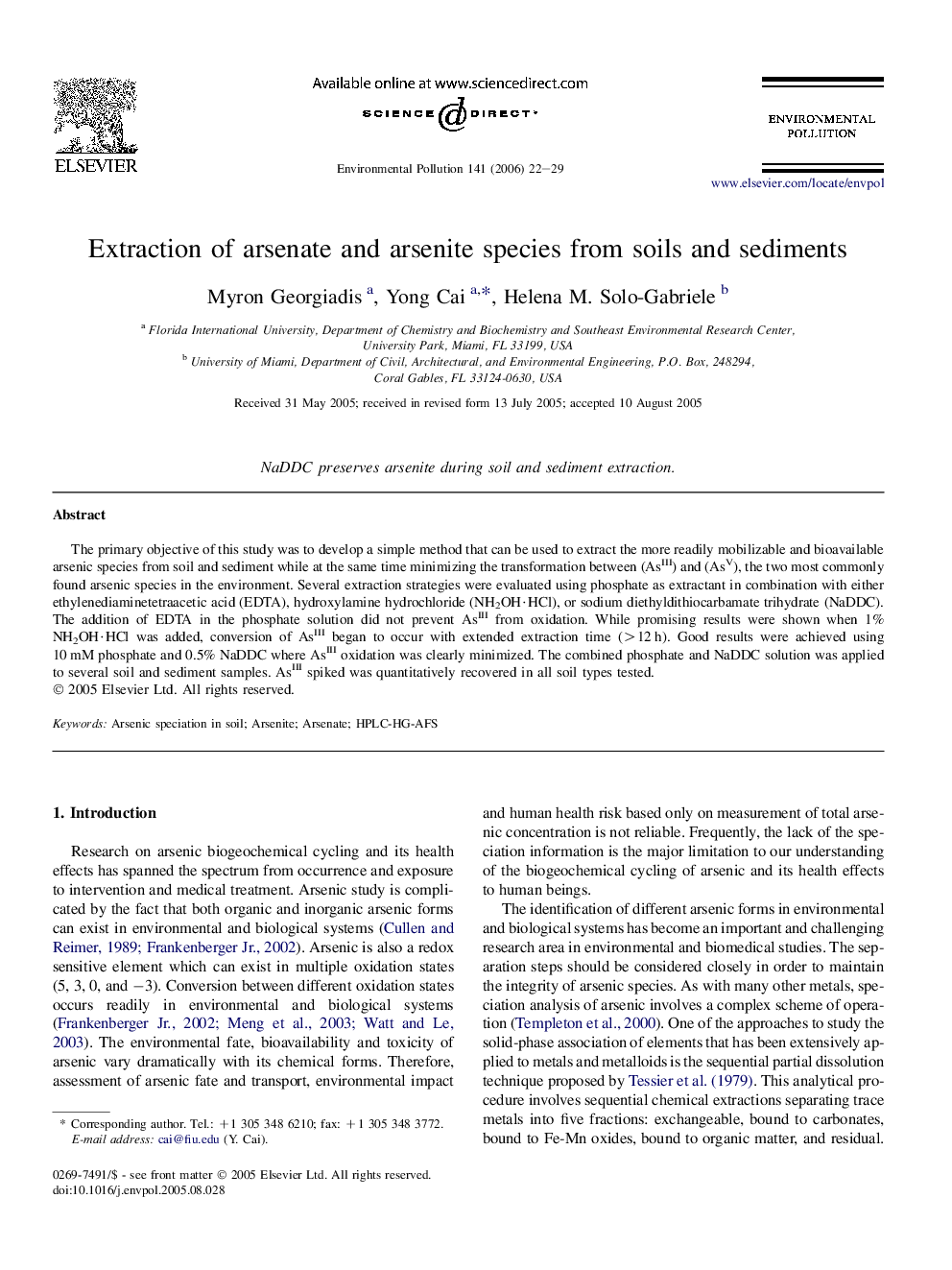| Article ID | Journal | Published Year | Pages | File Type |
|---|---|---|---|---|
| 4427668 | Environmental Pollution | 2006 | 8 Pages |
The primary objective of this study was to develop a simple method that can be used to extract the more readily mobilizable and bioavailable arsenic species from soil and sediment while at the same time minimizing the transformation between (AsIII) and (AsV), the two most commonly found arsenic species in the environment. Several extraction strategies were evaluated using phosphate as extractant in combination with either ethylenediaminetetraacetic acid (EDTA), hydroxylamine hydrochloride (NH2OH·HCl), or sodium diethyldithiocarbamate trihydrate (NaDDC). The addition of EDTA in the phosphate solution did not prevent AsIII from oxidation. While promising results were shown when 1% NH2OH·HCl was added, conversion of AsIII began to occur with extended extraction time (>12 h). Good results were achieved using 10 mM phosphate and 0.5% NaDDC where AsIII oxidation was clearly minimized. The combined phosphate and NaDDC solution was applied to several soil and sediment samples. AsIII spiked was quantitatively recovered in all soil types tested.
